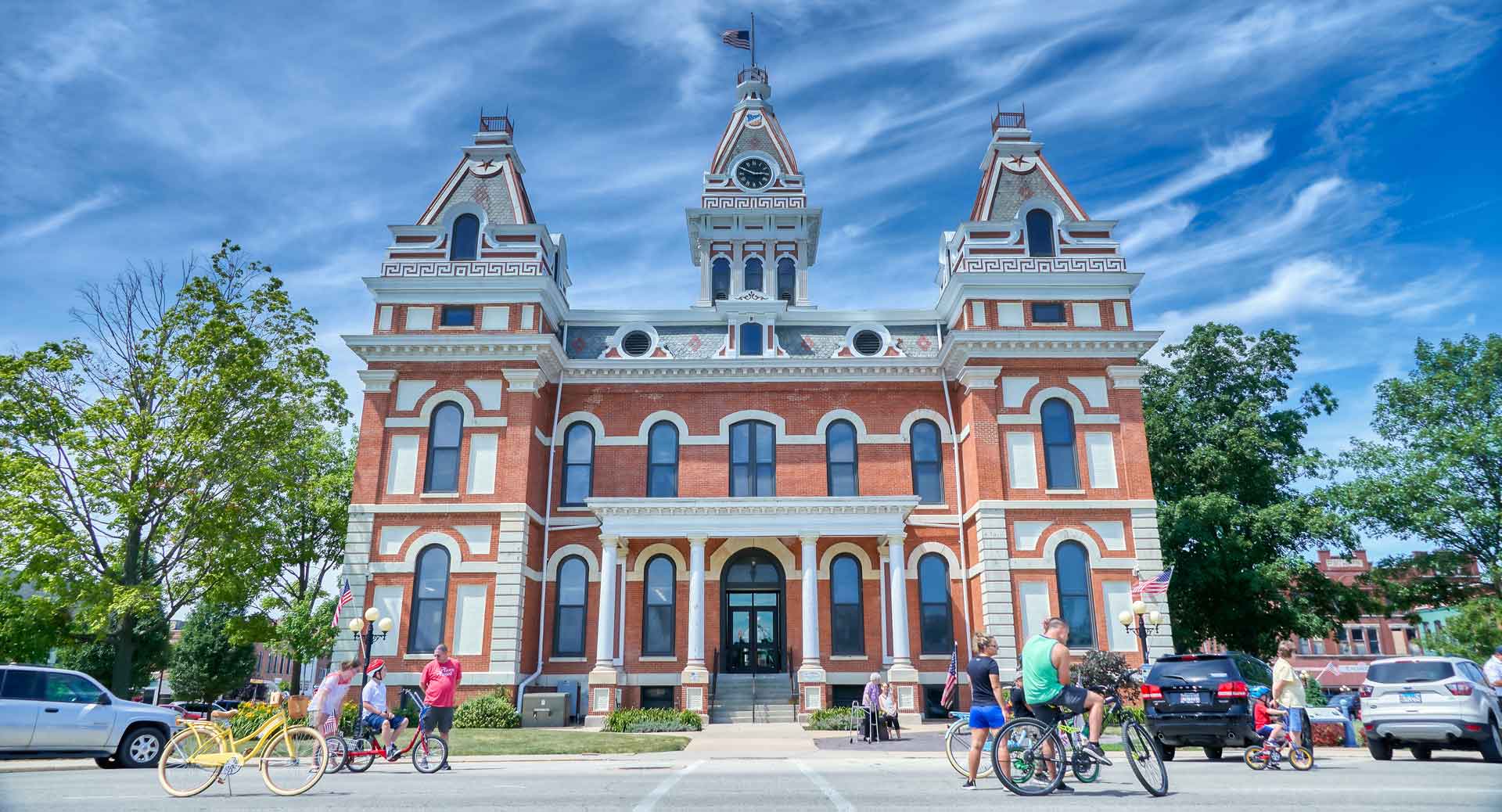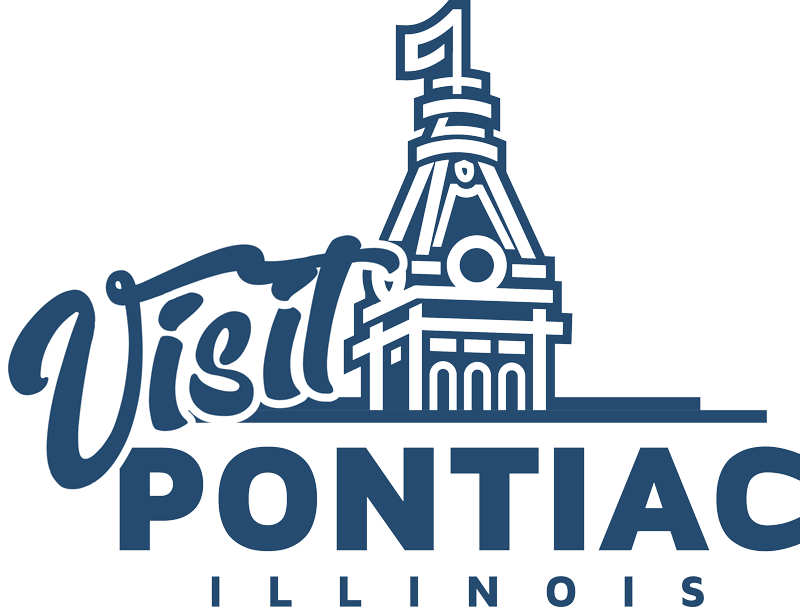
Pontiac Culture & Heritage
Traditions & Values Take Root
One of the first cultural events of significance to occur in Pontiac was the arrival of the first piano in the frontier village. According to local lore, one of Pontiac’s first merchants, C.H. Perry, brought the first piano to Pontiac.
Samuel C. Ladd, a native of Connecticut, arrived in Pontiac in 1842. An educated man, Ladd started the first school in Pontiac. Lacking an official school building, Ladd and his students met in the original Livingston County Courthouse until a dedicated schoolhouse could be built. Ladd was later honored by having a street and one of Pontiac’s grade schools named after him.
Pontiac city leaders have always put great emphasis on education and our children enjoy excellent facilities, programs, and teachers. There are currently both public and private grade schools, public junior and senior high schools, and a satellite campus for Heartland Community College in town. From 1966-1971, Pontiac was home to Winston Churchill College, a two-year degree institution.
In 1874 when the Presbyterian church decided to build a larger home for its congregation, the original church building was sold to Wallace Lord, who moved the former church building to a new location on Howard Street and turned it into the city’s first live performance venue. As the new social nexus of the community, Lord’s Opera House hosted more than dramatic performances. The hall was used for local fundraising events such as a “New England Supper” offered by the Pontiac Young People’s Association. The venue served as home of the popular Pontiac Dance Club and hosted their regular, lively events like a “Jamboree” staged by the local African American community and what the newspaper derisively called “cheap lottery concerts.” When Lord’s Opera House featured a professional company of dramatic players or vaudevillians, it was consistently “playing to crowded houses.” Lord’s Opera House operated from 1874-1884 when a fire destroyed the theater.
The Folks Opera House, built in the 100 block of East Water Street, was completed in the early 1890s. It served as the cultural center of the town with touring artists playing there as they traveled the theatrical circuit from Chicago to St. Louis. Shows at the Folks Opera House represented a broad variety of styles, including vaudeville, melodrama, magic shows, operettas, burlesque, and minstrel shows, as well as full dramatic productions. The Folks Opera House was destroyed by fire on March 24, 1923.
The Bond Theater in Pontiac was built in 1918 and featured both live performers and early silent movies using a hand-cranked projector with live musical accompaniment. The Bond was a simple, nickelodeon-style theater. Architecturally, its facade featured a simple wooden upper story and a corrugated metal exterior ticket lobby, fronted by wooden pillars. Stud lighting outlined the entrance. The Bond Theater closed in 1932.
The Pontiac Chautauqua Assemblies also played a major role in bringing a diverse range of cultural activities to the city. Through time, numerous local groups have focused on visual arts (the Amityville Painters), the performing arts (Vermillion Players, the Municipal Band, the Dancenter), and hundreds of individual artists, some of whom belong to the more recently formed Pontiac Art Center. The Walldogs visit in 2009 — with the resulting 23 large and colorful murals — has sparked a new period of artistic experimentation here. The more recent opening of the Dongbai International Art School created even more interest in Pontiac’s thriving art scene.
Famous Visitors
In the 1840s, Abraham Lincoln and Stephen A. Douglas both visited Pontiac many times as lawyers traveling the 8th Judicial District Circuit. They were at times accompanied by Judge David Davis, who was to become an Associate Justice of the United States Supreme Court from 1862-1877 and a U.S. Senator from Illinois from 1877-1883. Douglas also spoke in Pontiac as a candidate in the 1858 Senate race against Lincoln. Lincoln’s last trip to Pontiac came Jan. 27, 1860, when he spoke to the Pontiac Young Men’s Literary Society at the Presbyterian Church.
Owen Lovejoy — noted abolitionist, friend of Lincoln, a “conductor” on the Underground Railroad, and a U.S. Congressman — came to Pontiac to speak in support of Lincoln during the 1858 Senate campaign. Lovejoy’s brother, Elijah, was murdered by a pro-slavery mob in 1837 in Alton, leading Lovejoy to take a more active role in politics and the anti-slavery movement.
King Edward VII, then Prince of Wales, paid Pontiac a short visit on Wednesday, Sept. 26, 1860. The prince was then a young man; he had spent five days near Dwight, 20 miles northeast of Pontiac, on a hunting trip and was on his way to St. Louis. The prince and his party were aboard a special train on the Alton railroad, and the city announced the party would pass through Pontiac at 8 a.m. the next morning. The entire population congregated at the depot to pay their respects to the future King of England, and he was the recipient of a splendid ovation at their hands. As the train stopped for wood and water at this point, the assembled multitude had the pleasure of gazing at the future king for five minutes as he appeared on the rear platform of the train and bowed his acknowledgments to the cheering throng that had congregated.
According to the Oct. 22, 1874, edition of the Pontiac Free Trader, former general and then-President Ulysses S. Grant and his wife visited Pontiac briefly on Friday, Oct. 16, while en route to Springfield. Six years later, on Tuesday, May 4, 1880, Grant returned to Pontiac, this time with his son. The story behind Grant’s 1880 visit is told in the pages of Livingston County History:
“Shortly after he left the White House, Grant returned to his old home in Galena. The citizens of Springfield sent him an invitation to visit the state capital, the home and burial place of Abraham Lincoln, and partake of its hospitality for a few days. He accepted the invitation, and announced that he would visit his son, Colonel Fred Grant in Chicago, and then go down the Chicago and Alton road to the capital. On the publication of this news, Arnold Thornton, H.H. McDowell and a few citizens decided to invite the General and party to stop over in Pontiac on the way and take dinner here. On Saturday, May 1, a dispatch was received from Colonel Grant saying that his father had accepted the invitation, and would take breakfast in Pontiac on Tuesday morning.”
Although Grant’s train was nearly two hours late, it was met by a select group of men who accompanied Grant to a local hotel for brief speeches and a meal.
William Jennings Bryan, candidate for president of the United States in 1896, 1900, and 1908, paid his first visit to Pontiac on Tuesday, Oct. 27, 1896. Bryan was given an enthusiastic welcome by his many admirers in Pontiac and Livingston County. He addressed the people from the stand in the city park and talked for 30 minutes on the political situation of the day, his address being well received. Bryan visited Pontiac on three other occasions as part of the Chautauqua program.
On June 3, 1903, President Theodore Roosevelt came to Pontiac to dedicate the Civil War Memorial that stands on the Livingston County Courthouse grounds.
William Ashley “Billy” Sunday, former Major League Baseball star turned preacher, spent a month in Pontiac from Nov. 5 to Dec. 5, 1904. Often called “the nation’s most famous evangelist,” the number of conversions here in Pontiac resulting from his dramatic style of religious declamation was recorded by the Pontiac Daily Leader as 1,054 people.
President Franklin D. Roosevelt made a brief stop in Pontiac in 1936 as part of a nation-crossing railroad journey that was a feature of his re-election campaign. He spoke from the rear platform of the train to a crowd estimated to be about 10,000 who had gathered at Pontiac’s Alton railroad depot.
